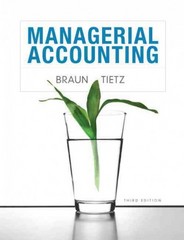Question
FASHIONISTA RWC is a successful accounting firm with a large range of clients across Canada. In January 2020, RWC has gained a new client: Fashionista
FASHIONISTA
RWC is a successful accounting firm with a large range of clients across Canada. In January 2020, RWC has gained a new client: Fashionista Inc. Fashionista Inc. is a retailer of women's clothing and accessories. It operates in many countries around the world and has expanded steadily from its base in Canada. Its main market is 15- to 35-year-olds and its prices are mid to low range. The company's year-end is June 30, 2020.
You are working on the June 30, 2020 audit engagement and Sophie, the audit manager has requested that you work on the audit of the purchase cycle.
You start with an assessment of the internal controls in order to determine the control risk for this section of the audit engagement. Because you are not very experienced, the audit manager has requested that you make a short memo to her attention to present your assessment of the internal controls over purchases. In order to show that you understand well the objective of this analysis, you decide to include in your conclusion a well justified indication of the areas where you think more audit effort will be required for substantive testing and to list two specific substantive audit procedures you would recommend for the purchase cycle given your assessment of the internal control system. In addition, since the purchase system seems to have important deficiencies, Tom Shelby, the engagement partner, has asked you to prepare the draft of a management letter to identify and explain four main deficiencies in the purchasing system, explain the possible implication of each deficiency and provide a recommendation to address each deficiency.
In the past the company has bulk-ordered its clothing and accessories twice a year. However, if the goods failed to meet the key fashion trends, this resulted in significant inventory write-downs. As a result, the company has recently introduced a just-in-time ordering system. The fashion buyers make an assessment nine months in advance as to what the key trends are likely to be. These goods are sourced from Fashionista's suppliers but only limited numbers are initially ordered.
Fashionista Inc. has an internal audit department but at present its only role is to perform regular inventory counts at the stores.
Ordering process - Each country has a purchasing manager who decides on the initial inventory levels for each store; this is not done in conjunction with store or sales managers. These quantities are communicated to the central buying department at the head office in Canada. An ordering clerk amalgamates all country orders by specified regions such as Central Europe and North America, and passes them to the purchasing director to review and authorize.
As the goods are sold, it is the store manager's responsibility to reorder the goods through the purchasing manager. The stores are prompted weekly to review inventory levels because, although the goods are just in time, it can still take up to four weeks for goods to be received in store.
It is not possible to order goods from other branches as all ordering must be undertaken through the purchasing manager. If a customer requests an item of clothing that is unavailable in a particular store, then the customer is provided with other branch telephone numbers or recommended to try the company website.
Goods received and invoicing - To speed up the ordering to receipt of goods cycle, the goods are delivered directly from the suppliers to the individual stores. On receipt of goods, the quantities received are checked by a sales assistant against the supplier's delivery note, and then the assistant produces a receiving report. This is done at quiet times of the day so as to maximize sales. The checked receiving reports are sent to the head office for matching with purchase invoices.
As purchase invoices are received, they are manually matched to receiving reports from the stores. This can be a very time-consuming process as some suppliers may have delivered to over 500 stores. Once the invoice has been agreed, then it is sent to the purchasing director for authorization. It is at this stage that the invoice is entered onto the purchase journal.
Step by Step Solution
There are 3 Steps involved in it
Step: 1

Get Instant Access to Expert-Tailored Solutions
See step-by-step solutions with expert insights and AI powered tools for academic success
Step: 2

Step: 3

Ace Your Homework with AI
Get the answers you need in no time with our AI-driven, step-by-step assistance
Get Started


